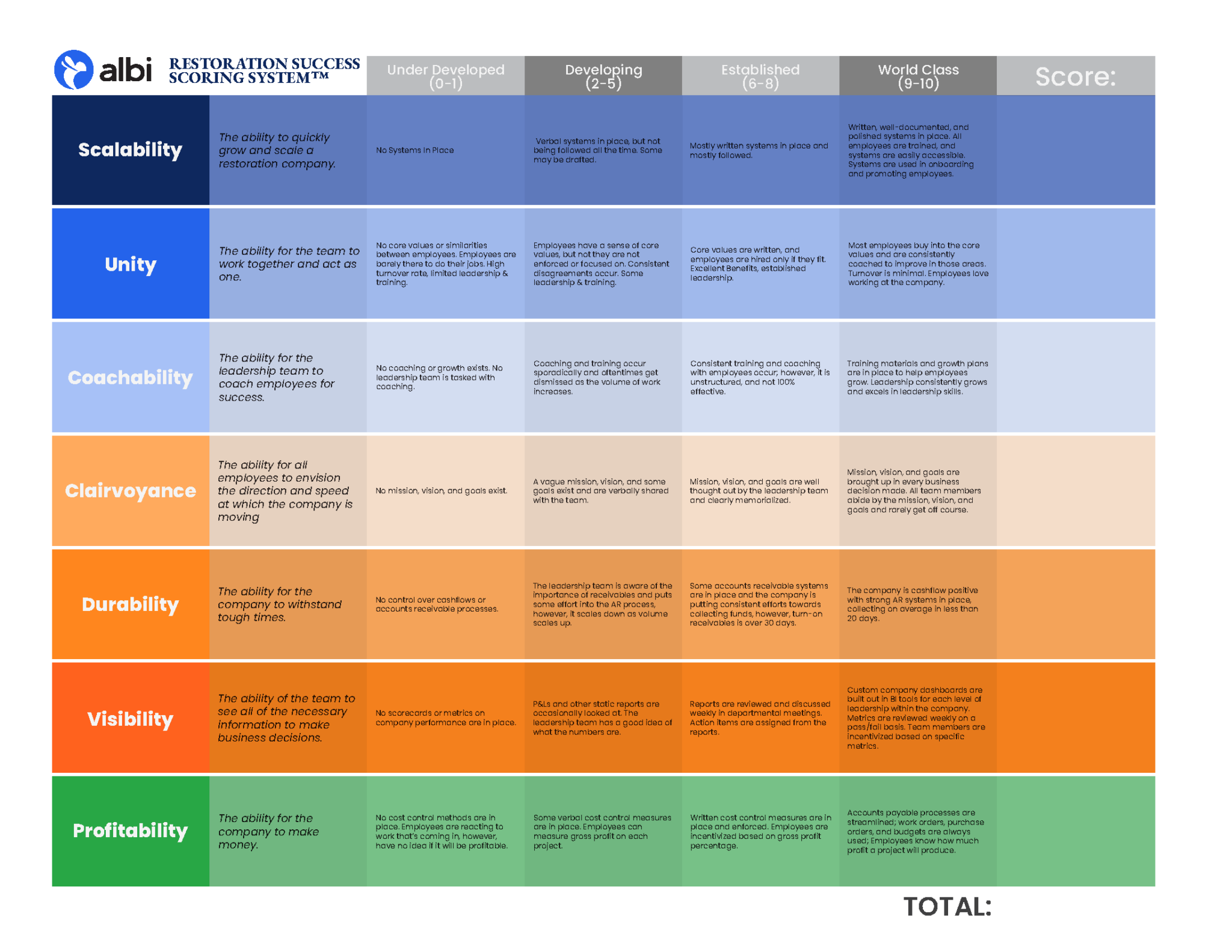Restoration Scorecard
Attention restoration contractors! Do you know where your company stands when it comes to accomplishing your goals?

Download the Restoration Scorecard
We created a restoration-specific scoring system that can help you better evaluate how your business is doing. It’s a scorecard that’s broken down into seven categories. The scorecard derives from the EOS system (Entrepreneurial Operating System.) It’s a general system to help entrepreneurs reach their goals. We’ve used these concepts and adapted them to what would be relevant and appropriate for restorers.